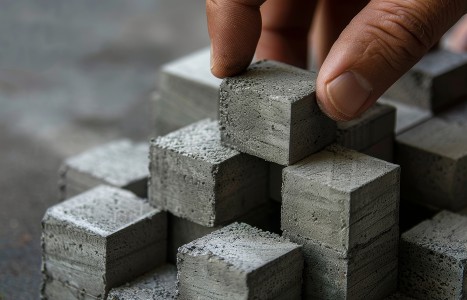Because traditional Chinese medicine (TCM) views the human body as an interconnected network of energy (qi) and seeks to restore balance and harmony, ensuring the smooth flow of qi and blood is crucial to nourish and regulate the reproductive system. TCM treatment aims to regulate menstruation, reduce anovulatory menstruation, help ovulation, improve egg quality, stabilize progesterone, and provide a good endometrium environment for successful implantation and pregnancy.
Important Combination Tonic Formulas
Formulas that combine various tonic herbs to treat major systems of the body – qi, blood, yin and yang - are commonly self-prescribed in China, especially as people pass the age of 40. The formulas address the effects of aging, including fatigue, slowing down of metabolism, aching of joints or muscles, poor tendon flexibility, poor concentration or memory, and loss of hair or skin tone. In addition to applications for aging, one also uses up reserves of qi, blood, yin and yang following childbirth, surgery, chemotherapy, radiation or prolonged illness. The formulas are also used to enhance both male and female fertility, and to regulate the menses. The formulas take individual tonic herbs (qi, blood, yin and yang) and combine them, or combine small formulas.
In general, one can take systemic formulas on a regular basis to enhance vitality and longevity, or for a shorter course, following illness or surgery. If formulas lead to restlessness, insomnia, overheating or abdominal bloating, reduce dosage or discontinue. Also, it is best to discontinue tonics during pathogenic wind events such as a common cold, as tonic herbs and formulas tend to pull pathogenic energy deeper into the body.
The formulas in this article address combination tonics for qi, blood, yin and yang. Many other formulas exist for more focused applications, including tonification of spleen qi, spleen yang, blood, qi and blood, kidney yin, kidney yang and jing. They are not included here.
TCM practitioners in North America like to give tonic formulas to patients anytime they complain of fatigue. This is a mistake. Tonic formulas are basically intended for people as they age past 50 years, or following a serious and prolonged illness, following major surgery, or following childbirth. In other cases of fatigue, there is often accompanying stagnation – either of qi or blood, or both. In those cases, priority should be given to clearing excess first. See "Treating Complex Multi-Layer Cases."
1. HUAN SHAO DAN. "Restore Youth Elixir" was authored by Hong Zun in 1170 (in Hong Shi Ji Yan Fang).
The ingredients are shan yao (Rhizoma Dioscoreae), chuan niu xi (Radix Cyathulae), shan zhu yu (Fructus Corni), fu ling (Poria), du zhong (Cortex Eucommiae), yuan zhi (Radix Polygalae), wu wei zi (Fructus Schisandrae), chu shi zi (Fructus Broussonetiae), xiao hui xiang (Fructus Foeniculi), ba ji tian (Radix Morindae Officinalis), rou cong rong (Herba Cistanches), shu di huang (Radix Rehmanniae Praep.), gou qi zi (Fructus Lycii), shi chang pu (Rhizoma Acori Tatarinowii), da zao (Fructus Jujubae).
Huan Shao Dan is a complex tonic that nourishes Kidney, Spleen and Heart. It is particularly useful for kidney yang deficiency causing weaken back, knees and legs, and is used to enhance male sexual function. It is also used to enhance fertility in both men and women. Also, by tonifying blood and yin as well as yang, the tendons and ligaments are nourished and strengthened. Because it also tonifies spleen qi and heart blood, the formula is commonly used by the elderly when yang, qi and blood have become depleted.
Several variations of Huan Shao Dan are available. With shan yao and niu xi being the lead herbs, this is most appropriate for weakened back and knees. Shan yao, da zao, shu di huang and fu ling are the lead herbs, benefiting Kidney, Spleen and Heart qi as well as kidney yang. In other versions, da zao occupies 22% of the formula, lending strong support to spleen qi as well as the kidney.
2. SHI QUAN DA BU TANG, "Ten Ingredients Great Tonifying Decoction", was authored by Wu Yan-Kui in 1180, in the text Chuan Xin Shi Yong Fang. It is available from various patent medicine manufacturers.
The ingredients are dang gui (Radix Angelicae Sinensis), shu di huang (Radix Rehmanniae Praep.), bai shao (Radix Paeoniae Alba), bai zhu (Rhizoma Atractylodis Macrocephalae), dang shen (Radix Codonopsis), fu ling (Poria), huang qi (Radix Astragali), chuan xiong (Rhizoma Ligustici Chuanxiong), zhi gan cao (Radix Glycyrrhizae Praep.), and rou gui (Cortex Cinnamomi).
Shi Quan Da Bu Wan boosts qi and blood, and warms yang. It is used by the aged as a general tonic, and for patients following surgery, chemotherapy, radiation or chronic illness. It is often used by women following menses as a general tonic and to warm the uterus. In the modern clinic, it has been found effective for promoting micro-circulation, adrenal function, immunological function, the repair of gastric ulcer, and promoting the healing of sores and wounds.
The prescription contains herbs that are found in the two formulas Si Jun Zi Tang, which tonifies qi, and Si Wu Tang, which nourishes blood, plus two warming herbs, huang qi and rou gui. Huang qi reinforces the building of qi and blood, while cinnamon bark rou gui boosts kidney yang.
3. GINSENG TONIC CAPSULES (Ren Shen Bu Wan) is a modern patent medicine from Central Medical Manufactory, Tianjin, China. It is composed of the following: ren shen (Radix Ginseng), rou cong rong (Herba Cistanches), nan sha shen (Radix Adenophorae), shan zhu yu (Fructus Corni), huai niu xi (Radix Achyranthis Bidentatae), fu ling (Poria), and hai ma (Hippocampus).
About 69% of this popular patent medicine consists of ren shen, an herbal tonic for heart and spleen qi. It is reinforced with medicinals to support both kidney yang (rou cong rong, hai ma) and kidney yin (nan sha shen, huai niu xi), which together boost kidney qi. Shan zhu yu astringes the formula into the kidney. The formula is a good tonic for aging patients, as well as those with diminished kidney fire affecting digestion and vitality. It is also used for poor memory or concentration, and weak lower back or knees.
4. JEN SHEN LU JUNG WAN (Ren Shen Lu Rong Wan) from Tianjin Lerentang Pharmaceutical, Great Wall Brand, China. Its composition is ren shen (Radix Ginseng), 15%; lu rong (Cornu Cervi Pantotrichum), 15%; huang qi (Radix Astragali), 15%; gou qi zi (Fructus Lycii), 15%; chen xiang (Lignum Aquilariae Resinatum), 10%; dong chong xia cao (Cordyceps), 10%; hai ma (Hippocampus), 10%; sheng di huang (Radix Rehmanniae), 5%; and huai niu xi (Radix Achyranthis Bidentatae), 5%.
This herbal capsule, also known as Ginseng Deer Antler Pill, tonifies qi, blood, yin, yang and jing and is used to compensate for the effects of aging, and for people who are recovering from illness or childbirth. It is also a useful fertility tonic for both men and women. The formula contains 30% ren shen and huang qi to tonify qi. Deer Antler lu rong (15%) nourishes blood and kidney yang. An additional 20% from dong chong xia cao and hai ma support the yang, and gou qi zi and sheng di huang (20%) tonify blood and yin. It is used for fatigue, weak lower back or knees, shortness of breath, poor digestion, weakened vitality, poor hearing, and poor memory or concentration, mental restlessness, insomnia, heart palpitations, poor memory, and male sexual depletion.
5. KWEI LING CHI (Gui Ling Ji),"Tortoise Age Collection," is a modern patent from Shanxi Traditional Chinese Medicine Works, China. It is based on a prescription made for Ming dynasty Emperor Jia Jing (1521–1567) and was recorded in 1541. The ingredients are lu rong (Cornu Cervi Pantotrichum), ren shen (Radix Ginseng), hai ma (Hippocampus), shu di huang (Radix Rehmanniae Praep.), rou cong rong (Herba Cistanches), gou qi zi (Fructus Lycii), huai niu xi (Radix Achyranthis Bidentatae), sha ren (Fructus Amomi), qiao nao (Passeris), suo yang (Herba Cynomorii), ding xiang (Flos Caryophylli), du zhong (Cortex Eucommiae), da qing yan (Halitum), chuan shan jia (Squama Manitis), tu si zi (Semen Cuscutae), bu gu zhi (Fructus Psoraleae), yin yang huo (Herba Epimedii), gan cao (Radix Glycyrrhizae), tian men dong (Radix Asparagi), shi yan (Fossilla Spiraferae).
Gui Ling Ji was developed for the Ming dynasty Emperor Jia Jing in 1541 as a health, fertility and longevity tonic. Its name, "Tortoise Age Collection," refers to the mythical longevity of great land tortoises. Although not recorded in any of the medical classics, the formula was discovered in the second half of the 20th century by medical researchers looking at the herbal prescriptions of the various rulers in Beijing's Forbidden Palace. It has been made available as a popular patent medicine, and in 2004, Gui Ling Ji was declared a "National Protected Prescription."
In the main, the formula boosts kidney yang, mingmen fire, and jing. About 45% of the formula consists of ginseng ren shen and deer horn lu rong, with an additional 8% of seahorse hai ma. Another 35% uses herbs that nourish blood, yin and yang. The formula is used for mental or physical fatigue, general weakness, frequent urination, weak lungs, lumbar pain or weakness, cold extremities, poor memory or concentration, poor digestion and poor circulation, and male sexual dysfunction. It is also useful in women where deficiency of kidney yang and jing contributes to infertility, amenorrhea, cold uterus, cold damp vaginal discharges, postpartum fatigue, and certain cases of menopausal disorder.


